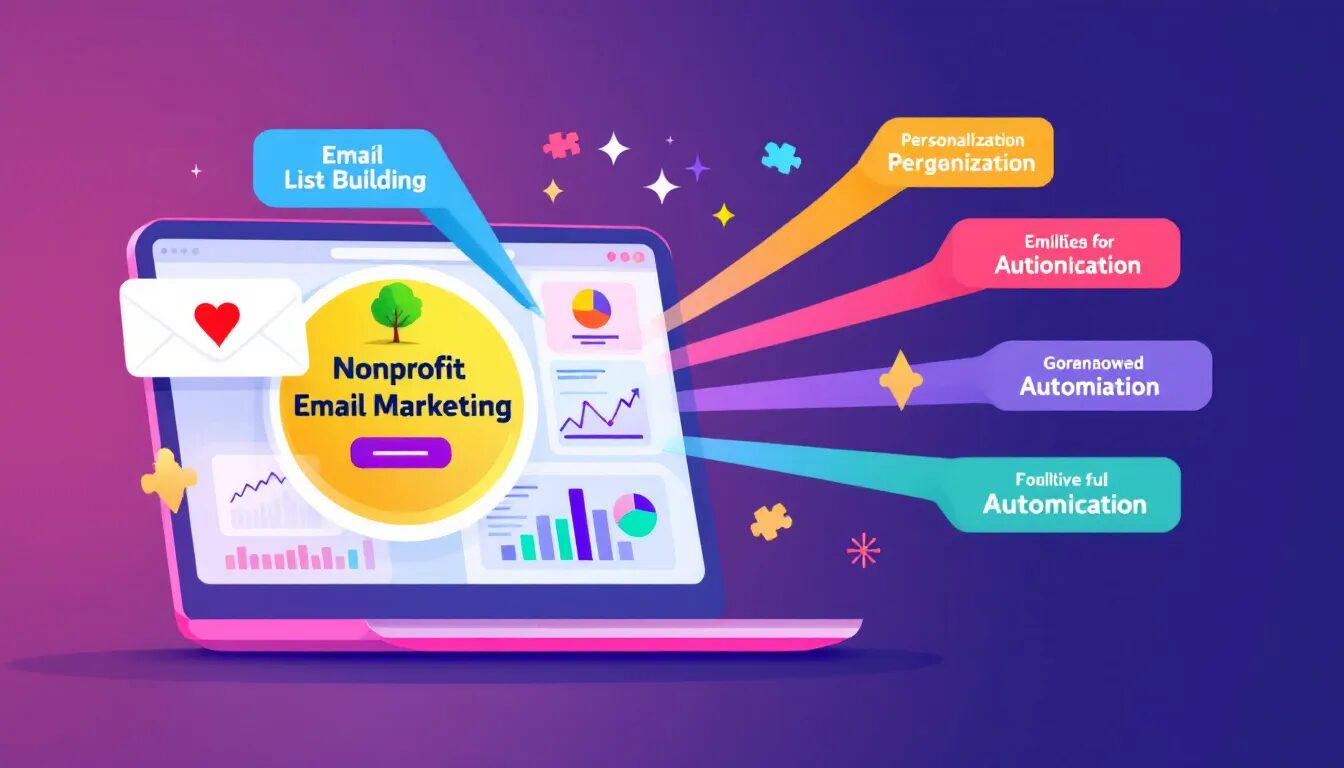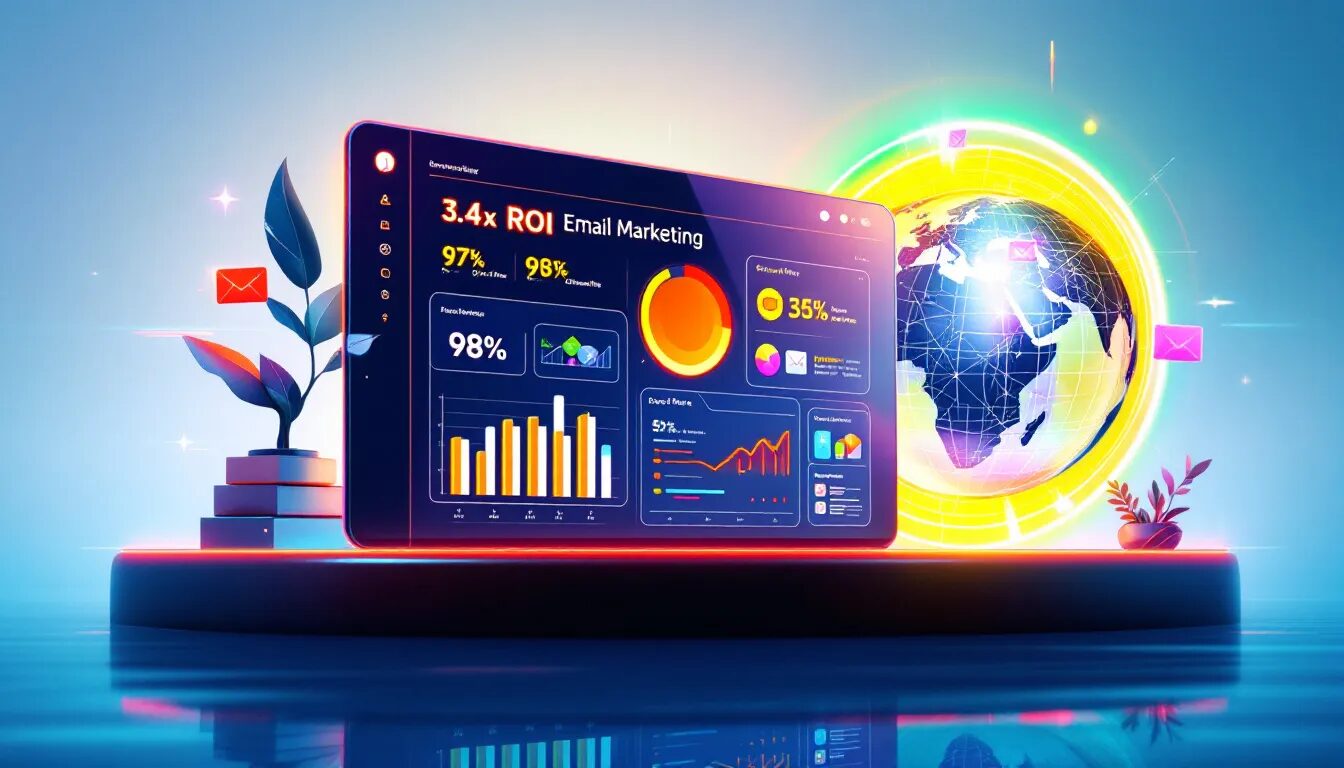
The Dirty Dozen Things You’re Doing Wrong with Your Email Marketing & How to Fix it Pronto
At VerticalResponse, our customers often ask what they can do to make their email marketing more effective. To help, we put together a baker’s dozen of things you can do to fix your emails right now. Each item on this list is an actionable to-do which can give you real results like list growth, increased open rates, better click throughs, and maybe even more sales. Let’s get cracking and go through the dirty dozen things you may be doing wrong with your emails and how to make improvements.
1. Not using a sign up form: This is one of the most common mistakes we see. If you don’t use a sign up form on your website, blog and social channels, you’re missing out on one of the most valuable and efficient ways to grow your list of contacts.
When someone visits your company website, blog or one of your social media pages and chooses to sign up for your email list, they’re actively agreeing to receive your content. They’re telling you they’re interested and want to hear from you. This makes these subscribers most likely to engage with the content you send. To help your email marketing efforts reach more people, you need to continually grow your list and a sign up form is both easy to create, and use.
We have numerous email sign up form resources to help you get started including:
- How to Use VerticalResponse Sign up Forms to Grow Your List [VIDEO]
- Everything You Ever Wanted to Know About Email Sign up Forms
- 6 Perfect Places for Your Email Sign up Forms
- 25 Effective B2B, B2C and Non-Profit Email Sign up Form Examples
2. Not sending a welcome email: After you have your email sign up form ready and rarin’ to go, make sure your next step is to set up and send an automated welcome email. It should be triggered to send each time someone signs up for your list. An effective and engaging welcome email does just what is says: welcoming and thanking your new subscriber or customer. If done correctly, a welcome email can keep a recent sign up coming back for more.
Statistics show new subscribers are most engaged within the first 48 hours. An automated welcome email (which is a type of autoresponder) can help you reach out to your new subscribers within that crucial window of time.
If you haven’t created a welcome email yet, we have heaps of help:
- 7 Reasons Your Business Needs a Welcome Email
- 7 Tips to a Stellar Welcome Email
- New Autoresponder Welcome Emails are Here
- 10 Examples of Highly Effective Welcome Emails
3. Your subject line is a snooze: Did you know the average person receives about 121 business emails a day? And that number is expected to increase to at least 140 by 2018. That doesn’t even include the number of personal emails people receive. You get the picture. Everyone receives a lot of emails and inboxes are loaded.
If your email doesn’t stand out in a subscriber’s inbox, it doesn’t stand a chance of getting opened and acted on. That’s why tips #1 & #2 above are so important to building an engaged list of subscribers. Now tip #3 takes over to command readers’ attention in the inbox with a killer subject line that begs to be opened.
Subject lines are one of, if not, the most important parts of your email. If your subject line isn’t compelling, your readers won’t open your email. All your compelling content will be missed. Wondering why you have a low open or click-through rate? The first culprit is your subject line. So let’s share some information that can help you turn that lame subject line into something truly awesome:
- Successful Subject Lines Deconstructed
- You Had Me at Hello – 5 Types of Subject Lines that Engage Your Audience
- 6 Tips to Whip Your Subject Lines into Shape
- Psst! Want to Know How to Write Irresistible Subject Lines?
- 50 All-Time Great Retail Subject Lines
- Busted: The Worst Email Subject Lines, Ever!
- The 5 Most Overused Phrases in Subject Lines
4. Not personalizing: Ever receive an email with your name in the subject line? Or maybe you got an email from your vet containing your pet’s name and favorite dog food along with a coupon? This is called personalization.
In an article by eMarketer, “A December 2013 survey of US digital shoppers conducted by Harris Interactive found that the majority of recipients of emails containing personalization drawing from previous shopping behaviors and preferences would be more likely to increase their purchases as a result. In fact, 81% of respondents said they were at least somewhat likely to make additional purchases, either online or in-store, as a result of targeted emails.” The same article goes on to say, “A majority of consumers were also not shy about sharing more information about shopping preferences with retailers in order to improve the types of messages they would receive. Nearly seven in 10 said they would disclose personal facts if the emails they received were more relevant as a result.”
It’s clear personalization works for engagement, but how the heck do you get info to personalize your emails? Look back at #1. Your email sign up form should contain fields like email address, but also maybe the basics like first name and perhaps a few other fields that will allow you to create a more personal experience for your subscribers. But, don’t go crazy and add a million fields to your form trying to collect everything under the sun. Form fills decrease with more than 3-5 fields. Rather, you can use information from previous purchases, webpages viewed or other data you may have to give your subscribers’ a more targeted message. Speaking of targeting, let’s move along to #5…
5. Not segmenting: Segmenting a list is simply the process of dividing it into sub-groups. While everyone on an email list may get some messages, you can then send very specific or targeted messages to just one group when the occasion arises. This lets you target individual readers who may be more receptive to your messages. Segmentation can have many benefits including the ability to target specific actions (buyers vs. non-buyers or openers vs. non-responders), or areas of interest (white wine vs. red or apartment rentals vs. houses for sale).
Again, you can capture some of this information in your email sign up form (#1), or you can use engagement with your sent emails (opens and clicks), or you can choose to send a survey to your subscribers to get information about their preferences and areas of interest. If you want to get a bit more advanced, you can use something called progressive profiling which enables you to capture little bits of information about website visitors each time they come to your website. When a visitor comes to your site and carries out multiple actions (e.g., downloads multiple guides), they’re presented with different fields on each form. This lets you collect, say, 9 pieces of information while only asking your visitor for 3 at any given time. It usually translates into a much better user experience and you end up with more information you can use in the future to deliver content and offers that are more targeted for that visitor. Most CRM systems allow you to do some sort of progressive profiling.
6. It’s not visually appealing (okay, let’s just say it… it’s ugly): We’re not usually this harsh, but man are there some ugly emails out there – anyone using comic sans font? And the sad thing is, they don’t need to be ugly when there’s a plethora of beautifully designed email templates out there just begging to be used. We get so many questions about email design that we recently created an entire guide focused on effective design for a number of different types of emails. The good news is, your email doesn’t have to be ugly. With advances in email marketing it’s now drop-dead simple to create a great-looking email without a drop of graphic design experience.
Grab these handy resources and give that email a makeover:
- 6 Design Tips to Make Your Email Newsletter Visually Appealing
- Don’t Let Your Email Look Defeated – 3 Essential Design Elements
- Top 10 Email Eyesores You Should Avoid
7. Your email isn’t responsive: When we say “isn’t responsive” we don’t mean your email is ignoring you, rather we are referring to the ability for your email to resize or reconfigure to the screen of the device the reader is using, whether it’s a desktop, laptop, tablet, or smartphone. Why should you care?
- US adults spend an average of 34 hours per month browsing the Internet on their smartphones, according to a recent Nielsen report.
- 51% of emails are now opened on mobile devices according to Litmus.
- 70% of mobile searches lead to an action on a website within one hour according to iAcquire. If the website isn’t mobile-friendly, 40% will choose another action.
- Attempting to view a website or email on a mobile phone only to have to zoom in, and scroll side-to-side is the result of a non-responsive design. This leads to frustration and, as the statistics show above, a loss of leads or potential customers.
Creating responsive emails isn’t a huge headache or ultra time-consuming either. You just need to use a responsive email template from your email service provider. Most ESPs offer them (we do!) and they can really make your end-users’ experience with your email so much better.
Watch this quickie 2-minute video that walks you through responsive design and how responsive emails look in VerticalResponse.
8. Not delivering valuable content: Once a subscriber opens your email (because your awesome subject line – #3), you’ve got just a few seconds to grab his or her attention. Stellar content can keep them engaged.
To create email content that’s valuable, you’ve got to get back to the basics by identifying what your prospects and customers care about. You can start by creating a list of the traits your very best customers and ideal buyers have. Identify what their biggest pain points are, what their concerns are in relation to your product/services and what they hope to accomplish. Too often, we fall into the routine of creating content that’s all about the features of our product and services instead of helping a potential buyer.
This concept of providing useful content was coined by Jay Baer in his New York Times bestseller, Youtility. The basic concept is to provide valuable content for your readers and customers, to the point where your company becomes valued, trusted, and synonymous with being useful. So when the time comes to make a purchase, your company is the obvious choice.
You can do this in your emails by sharing useful information like FAQs, how-to’s, interesting case studies that don’t focus on selling and other customer-centric types of content.
Take a peek at a few of our posts that focus on content:
9. No call to action: Your call to action (CTA) should tell your reader exactly what you want them to do. So make it obvious and use bold, action oriented language in your CTAs. Tell your reader what you want them to do. We recommend using action verbs like Buy, Learn, Create, Start, Sign Up, etc.
We even have a call to action button generator you can use to create call to action buttons to use in your emails and for your website. Create some and try them in your next email (did you notice that call to action?)
10. You don’t mail frequently enough, or you mail every. single. day: A common question we get is “how often should I send emails out?” That’s a tricky question in that there’s no one size fits all answer. What works for one business won’t for another. A lot depends on your list, your product/service and of course, what you promised your subscribers when they signed up. Your email sign up form should very clearly articulate the benefit of joining your list and how often you’ll send email. That helps manage expectations from the get-go.
Getting back to the age-old question of how often you should send is really up to you and what you can support with valuable content (#8). Again, depending on your business, you might want to start at once a month and then slowly increase to twice a month and then once a week, or keep it at once a month and go slowly. Either way, always make sure to proactively communicate any send frequency changes to your subscribers and explain the added value of getting more emails from you.
11. Don’t look at your reporting/analytics: You may be happily sending out your weekly newsletter and chugging along just fine, but are you making the most of each of those newsletters? Your email reporting can help you decide. Reporting isn’t there to overwhelm you with a bunch of charts and graphs that don’t mean anything. On the contrary, reports make it easy not only to see what’s working but also make it clear what to do next.
If your last email newsletter had a poor open rate, look at your subject line (#3) – was it a snoozer (be honest)? Were your click thorough rates a little underwhelming? How was your call to action (#9)? If you’re using VerticalResponse, easy-to-read charts give you key stats, and show who opened your email and what links they clicked on, plus you can quickly create a list of people who may have missed your message, or those who clicked, to make follow-up campaigns a breeze. This is the power of reporting; so don’t avoid that area of your account no matter which email service provider you use.
12. Your email is anti-social: Nearly every email service provides an easy way to include icons and links to the social media sites your business has a presence on, so take advantage of this simple and effective way to allow your subscribers to connect with you in other ways. This isn’t the time to hide in the corner of the party. Get out there and get social with your subscribers.
BONUS: 13. You don’t have goals: Another common mistake people make is sending emails without a clear idea of why they are sending them in the first place. We often hear, “I know I should be doing it, so I do.” Ack! You need a better reason and that reason can include any of the following: Help your users and prospects, grow your list, drive visits to your physical location, website or blog, to generate revenue, book appointments or any or all of these reasons. Email is an affordable and effective means of accomplishing all kinds of goals which is why is has continued to prosper for so long.
This list of the dirty dozen things (plus a bonus) you are doing wrong with your email should help you make positive changes to increase the effectiveness of the email you send.
What other email wrongdoings would you add to our list? Share in the comments.
Send effective emails today using VerticalResponse – It’s free up to 1,000 email contacts.
© 2015 – 2019, Contributing Author. All rights reserved.



